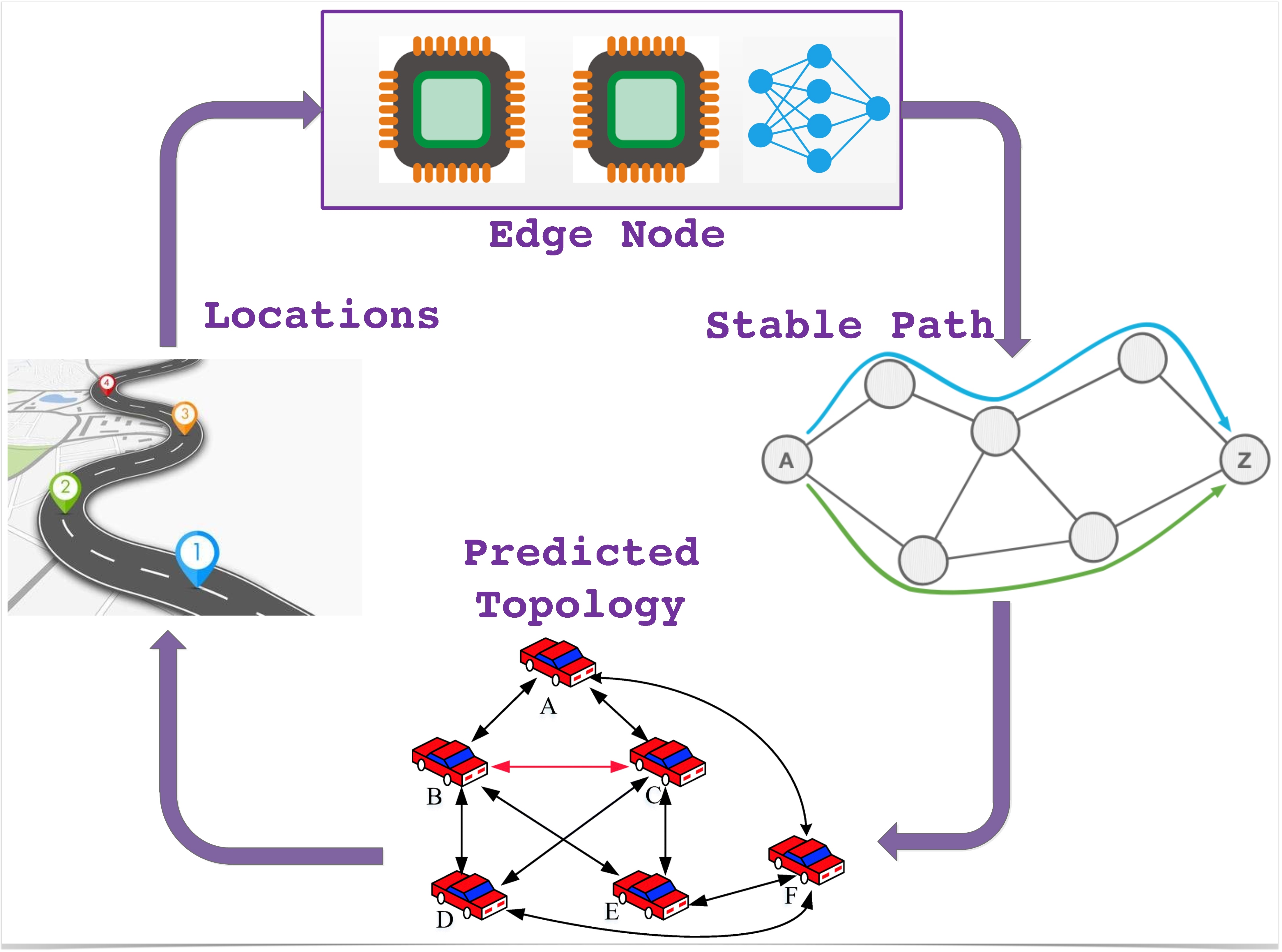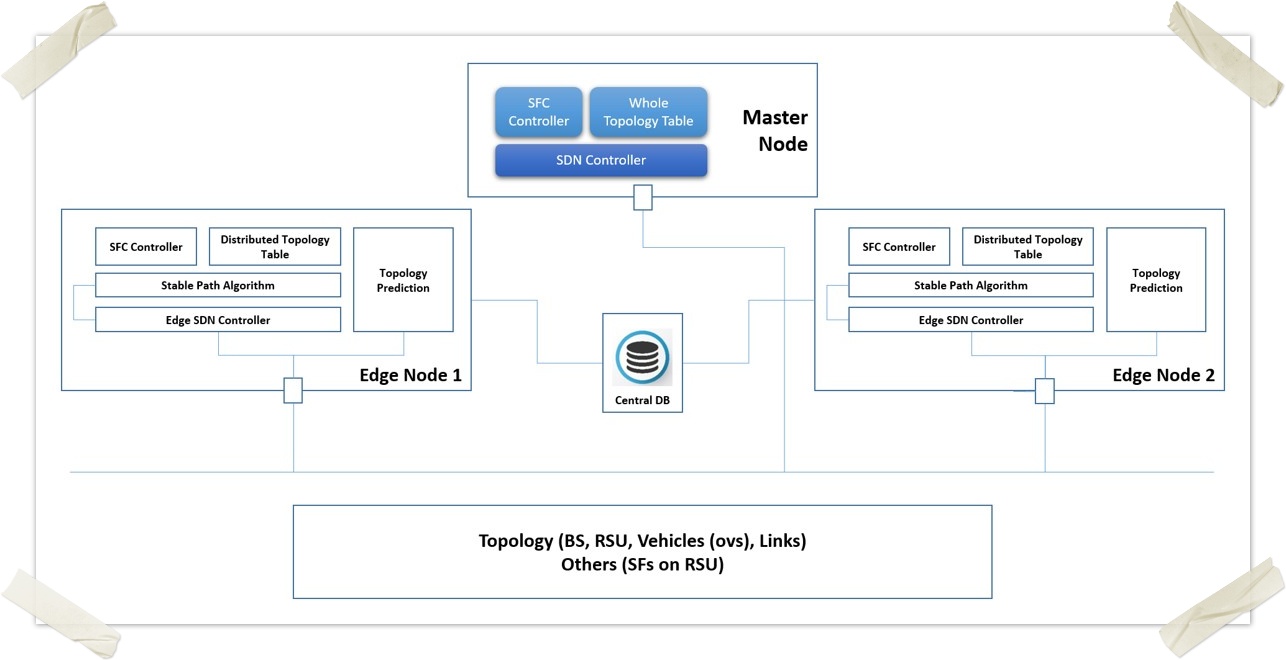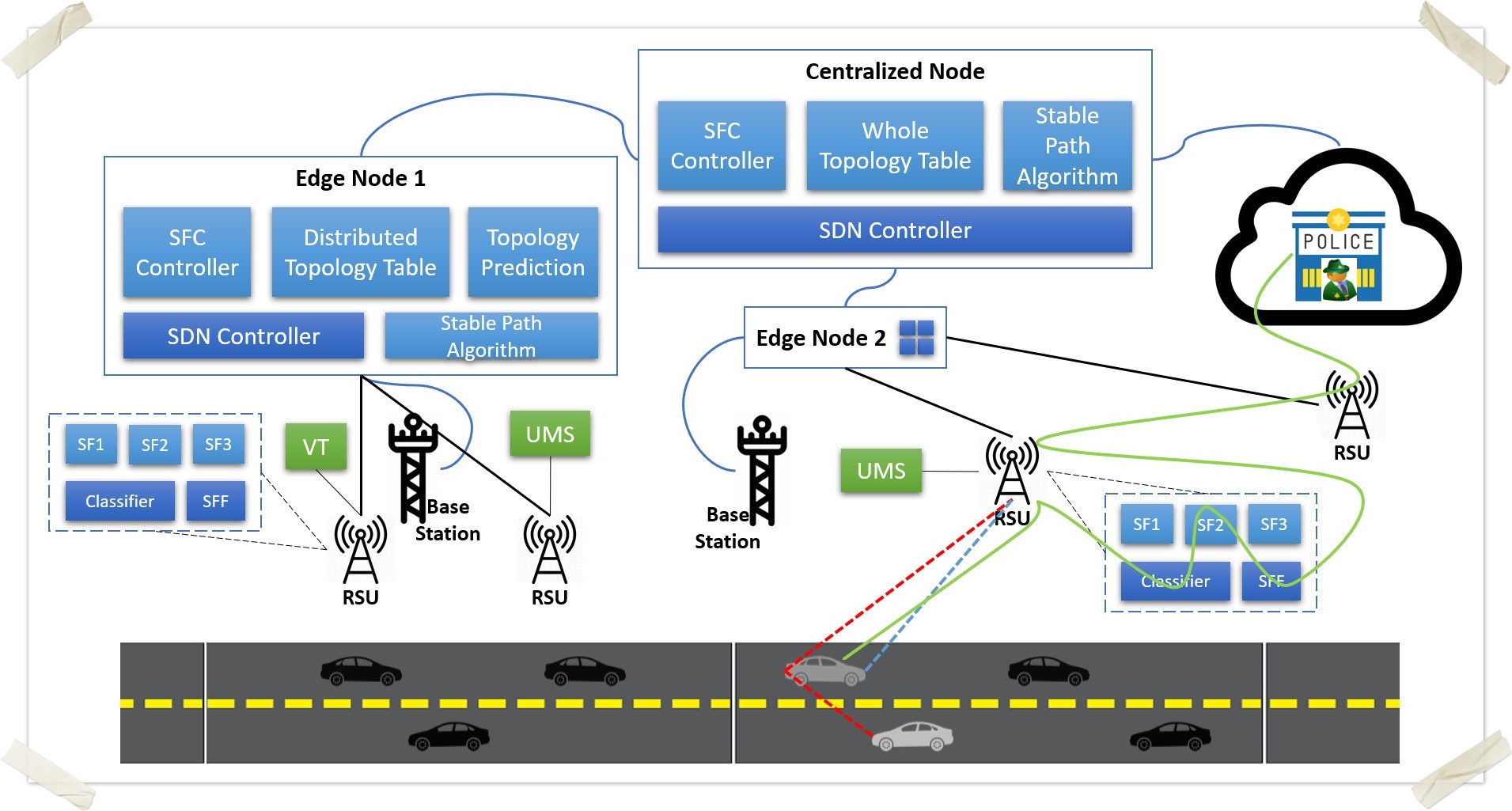| Page Tree | ||||
|---|---|---|---|---|
|
MEC-based Stable Topology Prediction for Vehicular Networks
Use Case Details:
Attributes | Description | Informational |
|---|---|---|
| Type | New | The use case is proposed under the ICN BP family |
| Industry sector | Area: SDN & NFV |
University: |
Gachon University |
| We focus on the problems related to networking and software technology for a better connection. |
| The technology that allows to build IT infrastructure, and aims to grow into a ‘Software Defined Infrastructure’ company. |
| Business |
| driver | The stable vehicular network is essential to enable various applications such as autonomous driving through VANETs |
| . Proposed MEC architecture tends to enable a promising infrastructure where a stable network topology can be predicted locally |
| to improve the network performance by providing intensive calculation for vehicles in the adjacent roads. Thus, converging the two concepts of |
| MEC and topology prediction can provide a strong use |
| case for the vehicular networks such as proactive path stabilization. | The |
| MEC-based Efficient Routing Algorithm |
| can provide a stable path by using the predicted future position for the nearby vehicles. The information can also be made available to the adjacent road resulting |
| from being useful to provide a stable topology on the road tracks. |
Stable network topology prediction in Internet of Vehicles (IoV) at the Edge cloud
QoS-based multi-channel support for different types of services
Real-time Computation for Autonomous and Self-driving cars
| Business use case |
| |
| Business cost - Initial build | Minimal |
configuration is three servers in total:
|
|
|
- 1 master node
- 1 database node
- 2 edge nodes
- OSM (Orchestrator)
- OpenStack (cloud provider)
- ONOS (SDN controller)
- OpenFlow (SDN southbound protocol)
- Ubuntu 18.04.3 LTS (OS)
Due to recent advancement in networks, IoV has a major role to play and is critical to performance. To this end, we introduce machine learning mechanisms integrated at the edge cloud as a proposal. As it is a known fact that the vehicles at the edge are directly connected to the Radio Station Units/Base Stations (RSU/BS) and placing such application/software packages at the edge can significantly enhance the performance in the IoV domain.
Further, the extended version of Kalman Filter is proposed to predict the network topological locations. The inference engine used for predicting the vehicular locations and further forming them into predicted topology proves to provide a stable path for the vehicles to communicate on the provided flow-based channels. Overall, the solution and architecture are flexible in nature which further allow the support of multiple use cases in 5G.
- Abbas, Muhammad Tahir, Afaq Muhammad, and Wang-Cheol Song. "Road-aware estimation model for path duration in internet of vehicles (IoV)." Wireless Personal Communications 109.2 (2019): 715-738.
- Abbas, Muhammad Tahir, et al. "An adaptive approach to vehicle trajectory prediction using multimodel Kalman filter." Transactions on Emerging Telecommunications Technologies (2019): e3734.
- Abbas, Muhammad Tahir, Afaq Muhammad, and Wang-Cheol Song. "SD-IoV: SDN enabled routing for internet of vehicles in road-aware approach." Journal of Ambient Intelligence and Humanized Computing (2019): 1-16.
Motivation:
Motivational aspects are:
- The topology in a vehicular network is updated and retrieved frequently
- This causes path instability
- Vehicular networks are wireless in nature
- However, Software-defined networking (SDN) is originally designed for wired networks
- Leads to the need for topology stability in vehicular networks
To this end, we introduce:
- Computation at the Edge
- Topology prediction to proactively stabilize the paths in vehicular network
QoS-based multi-channel Scenario:
The architectural view of our system is as follows:
QoS-based multi-channel Scenario:
| Price factor depends on the cost of RSU quality, and should be only considered for physical deployment. i.e. wireless or wired. | ||
| Business cost - Operational | Virtual environment does not require cost. | |
| Operational need | Using the frontend GUI to:
| |
| Additional details |
| PPT is attached as proposal statement. |
Species Details:
Attributes | Description | Informational |
|---|---|---|
| Type | Integrated Cloud Native NFV/App stack (ICN) | |
| Blueprint Family | Existing | |
| Use case | Stable network topology in IoV | |
| Blueprint proposed name | MEC-based Stable Topology Prediction for Vehicular Networks | |
Initial POD cost | Satellite POD | |
Scale & Type | System will be developed/deployed in VMs. | |
| Applications |
| Open Air Interface (OAI) provided LTE network services will be used. |
Infrastructure orchestration |
| |
| SDN | ONOS will be used at the application layer | |
Workload type | VMs and Containers | |
Additional |
|
Committers and PTL (Project Technical Lead)
Please enter in all names of the committers for the project.
PTL is done off of self nomination process. If you wish to be considered for the PTL, please indicate that by putting a Y in the self nomination column (use the slide to move the table left to right). Per Akraino rules, if there is only one nominee, that person becomes PTL (when confirmed by the Akraino TSC). If there is more than nominee, we will then have an election.
The election process is open and will go through 7 Oct. 2020 at Noon Pacific time.
Committer | Committer Company | Committer Contact Info | Time Zone | Committer Bio | Committer Picture | Self Nominate for PTL (Y/N) | ||||
Gachon University | Asia/Seoul (UTC+9) | Y
| ||||||||
| Gachon University | Asia/Seoul (UTC+9) | from: to: Present |
Contributor
| Info | ||
|---|---|---|
| ||
This Wiki is owned by the Akraino Community. Contributions are always welcomed to help make it better! In upper right, select Log In. You will need a Linux Foundation Account (can be created at https://identity.linuxfoundation.org/) to log-in. For a Wiki tutorial, please see Confluence Overview. Thank you! |
Recent space activity
| Recently Updated | ||||||||
|---|---|---|---|---|---|---|---|---|
|


